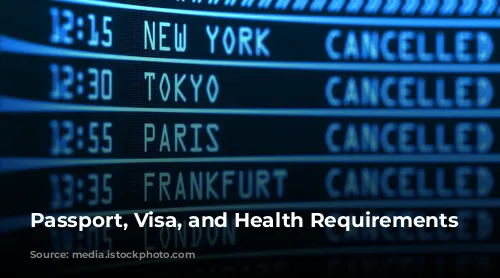Before embarking on your Japanese adventure, it’s crucial to make sure you have all the necessary travel documents in order.
The Foreign and Commonwealth Office website provides up-to-date information on passport, visa, and health requirements, including any COVID-19-related protocols. It’s your responsibility to ensure that you and your travel companions possess the appropriate documents and comply with all immigration/entry regulations.
Don’t forget to check the validity of your passport and allow ample time for renewals, which can take up to 10 weeks.

Eligibility for the Japan Rail Pass
The Japan Rail Pass, a travel pass that offers incredible value for money, is accessible to foreign passport holders visiting Japan on a temporary visitor visa for 90 days or less. This encompasses various travel purposes like tourism, business trips, and family visits.
However, those planning to stay longer than 90 days due to reasons such as working holidays, military or diplomatic assignments, cultural or research activities, or holding a working visa, are not eligible for the pass.
Even Japanese citizens residing abroad can benefit from the Japan Rail Pass, but they need to fulfill specific requirements. Proof of 10 years of consecutive residency abroad, issued before purchasing the pass, is mandatory. This proof can take the form of an Overseas Residential Registration or a Certificate of Overseas Residence obtained from the Japanese Embassy of their residence. For those residing in the United States, Brazil, or Canada, a permanent residency card demonstrating at least 10 years of residence on the date of purchase is acceptable.

Using the Japan Rail Pass
The Japan Rail Pass grants you access to all JR lines throughout Japan. This includes free use of almost all Shinkansen lines, such as Hikari, Sakura, Kodama, and Hayabusa. Excitingly, from October 1, 2023, the Shinkansen Nozomi and Mizuho lines have been added to the pass’s coverage.
However, for these two trains, travellers will need to pay an extra charge at stations for mandatory seat reservations. This cost ranges from 4,000 to 8,000 Yen.
The pass extends its benefits to the Tokyo Monorail, specific lines of Aomori Railways, certain local JR buses, and the JR Miyajima ferry in Hiroshima.
Keep in mind that the Japan Rail Pass doesn’t cover private railway lines, such as Hakone-Tozan, NankaiKoya, Fujikyu, and Kitakinki-Tango. If a JR train operates on non-JR tracks, you will be required to pay a supplement for that portion of the journey.

Exchanging and Using Your Japan Rail Pass
Your Japan Rail Pass will be delivered directly to your first hotel in Tokyo. Upon check-in, it will be waiting for you, allowing you to conveniently pick it up and activate it on day 5, in time for your first journey from Tokyo to Kanazawa.
To use the pass, you can exchange it at any train station.

Reserving Your Seat
While the Japan Rail Pass provides flexible travel options, reserving seats can enhance your journey. You can book reserved seat tickets for most trains compatible with the pass. However, reservations may not be possible if the seats cannot actually be used, such as booking seats for the same time on different trains. Therefore, it’s essential to reserve a seat only after finalizing your train choice.
For reservations, head to a ‘Midori-no-madoguchi’ (Green Window) or ticket office. You can also present your Japan Rail Pass at any Travel Service Center, ‘Midori-no-madoguchi’ at a JR station, or JR-associated travel agency’s sales office.
Ticket machines are another convenient option for acquiring seat tickets. Their operating hours are generally from 4am to 11.30pm, although these times may vary depending on the location.
Please be aware that reservations may take time if the service counter is busy. Additionally, reservations are not possible at unmanned stations or those lacking reservation capabilities.

Understanding Seat Types
Most Shinkansen, limited express, and express trains offer different seat types: reserved Green car seats, reserved Standard car seats, and non-reserved seats. It’s important to note that some trains may not have non-reserved seats, with all seats being reserved.
On most ‘HIKARI’ and ‘KODAMA’ trains on the Sanyo Shinkansen Line (Shin-Osaka—Hakata), as well as Series 800 trains on the Kyushu Shinkansen Line, there are no Green cars.
For non-reserved seats, you can use your Japan Rail Pass alone, except on ‘NOZOMI’ and ‘MIZUHO’ trains on the Tokaido, Sanyo, and Kyushu Shinkansen. However, with the Japan Rail Pass, you cannot use any seats, including reserved or non-reserved ones, on ‘NOZOMI’ and ‘MIZUHO’ trains on these Shinkansen lines.

Traveling with Oversized Baggage
For those planning to bring baggage larger than a certain size onto the Tokaido/ Sanyo/ Kyushu Shinkansen (Tokyo – Nagoya – Kyoto – Shin-Osaka – Hiroshima – Hakata – Kagoshima-Chuo), advance reservations are required for both your seat and the baggage area.
Oversized baggage is defined as having a total measurement of its three sides (length, width, and height) exceeding 160cm and within 250cm. Baggage exceeding 250cm is not permitted on the Shinkansen.
The designated storage space for oversized baggage is located behind the rearmost seat. To secure this area, make an advance reservation when booking your seat, which will then be referred to as a ‘seat with oversized baggage area’. No additional charge is incurred for this reservation.
To utilize the storage space, make a reservation at the ticket counter or ticket machine. If you purchased your Japan Rail Pass through the ‘Japan Rail Pass Reservation’ website, you can book seat tickets on the same website.
Before boarding the train, place your oversized baggage in the designated area. Failure to make a reservation for oversized baggage will result in a carry-on fee of 1,000 JPY (tax included) and your baggage will be stored in a space designated by the crew.
It’s worth noting that while seats with oversized baggage areas are primarily for passengers with oversized baggage, they can also be used by those requiring space for a baby stroller or other items. Baggage with a total measurement within 160cm can be stored in the rack above the seat.

Benefits of Advance Reservations for Oversized Baggage
Advance reservations for oversized baggage offer several advantages:
- Before boarding: Passengers can secure the baggage area in advance and travel without the hassle of storing their luggage.
- Boarding/getting off the train: The pre-reserved baggage area, located near the boarding door, allows for efficient storage, making boarding and disembarking smooth.
- While onboard: Passengers can rest assured knowing their baggage is safely stored in the designated area near their seat.
With a little planning and an understanding of the Japan Rail Pass’s features, you can unlock a seamless and enjoyable travel experience throughout Japan.








